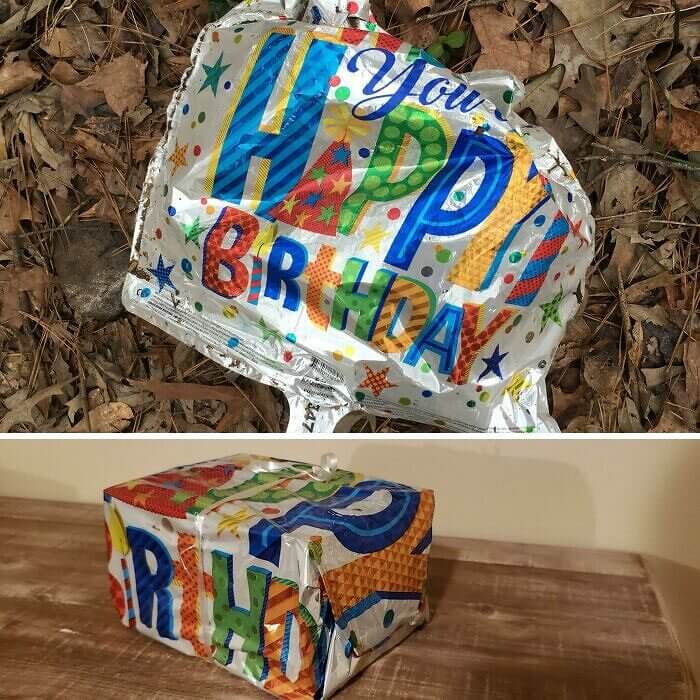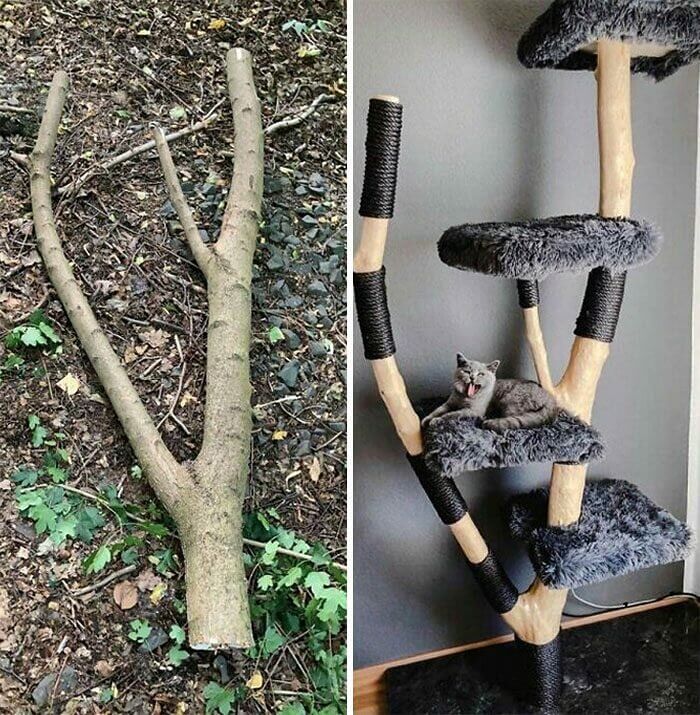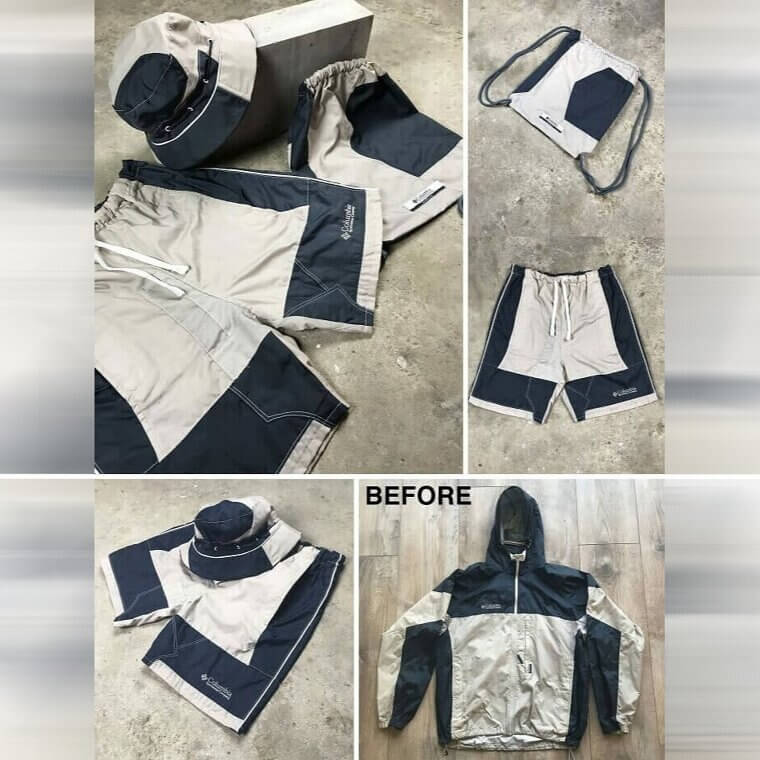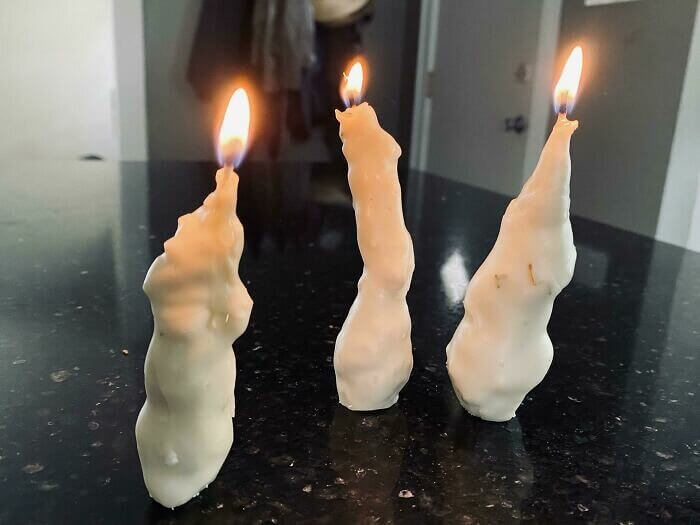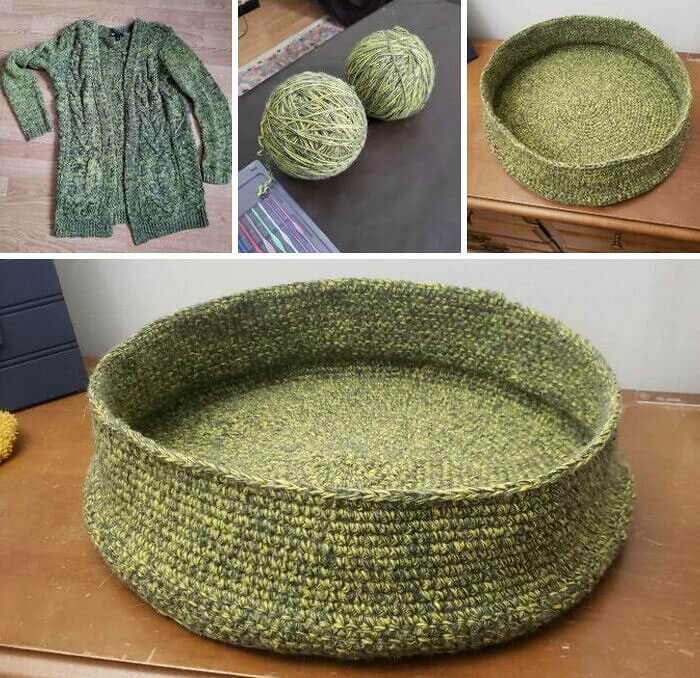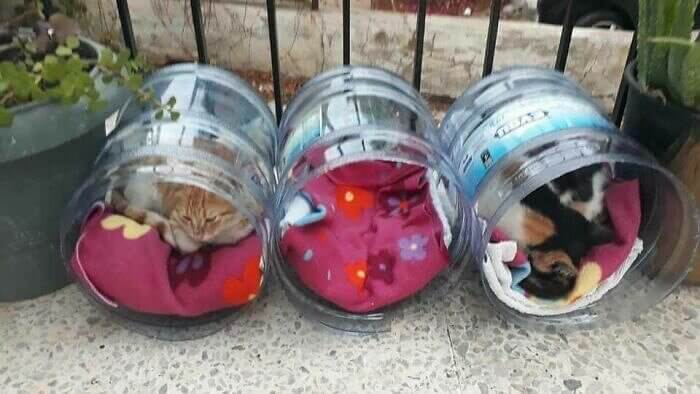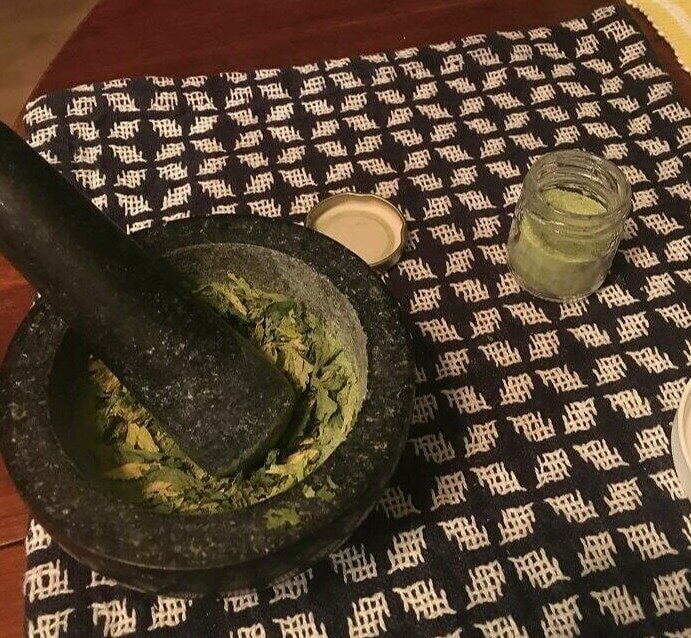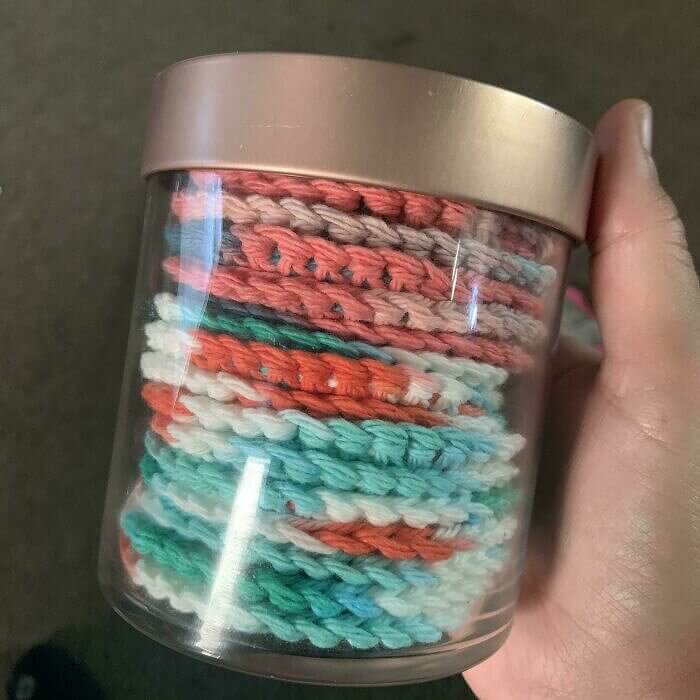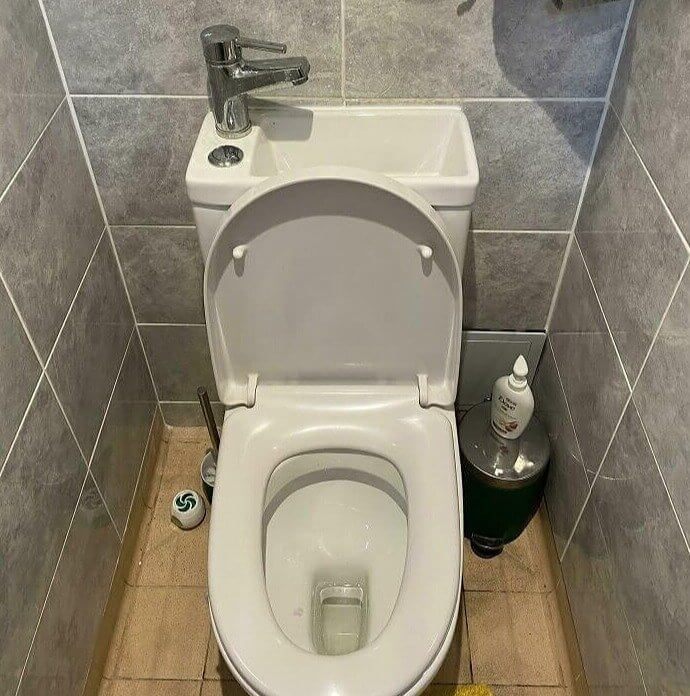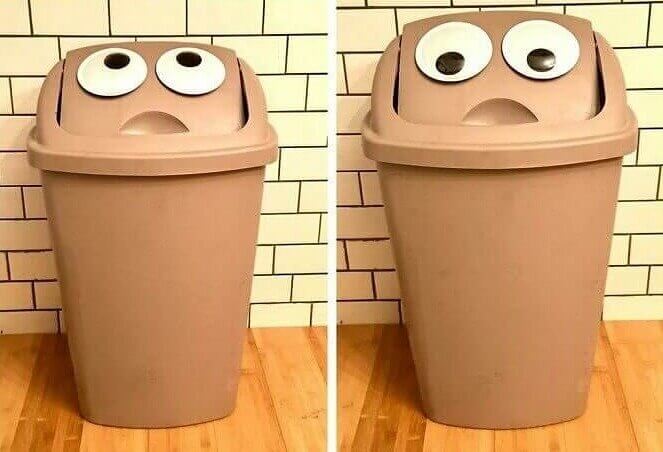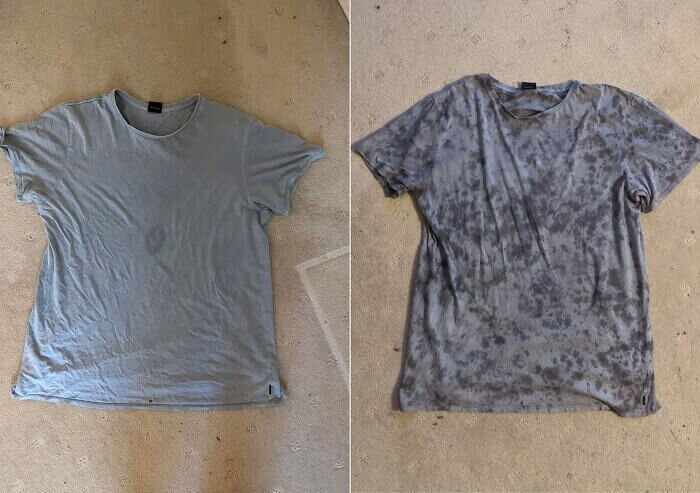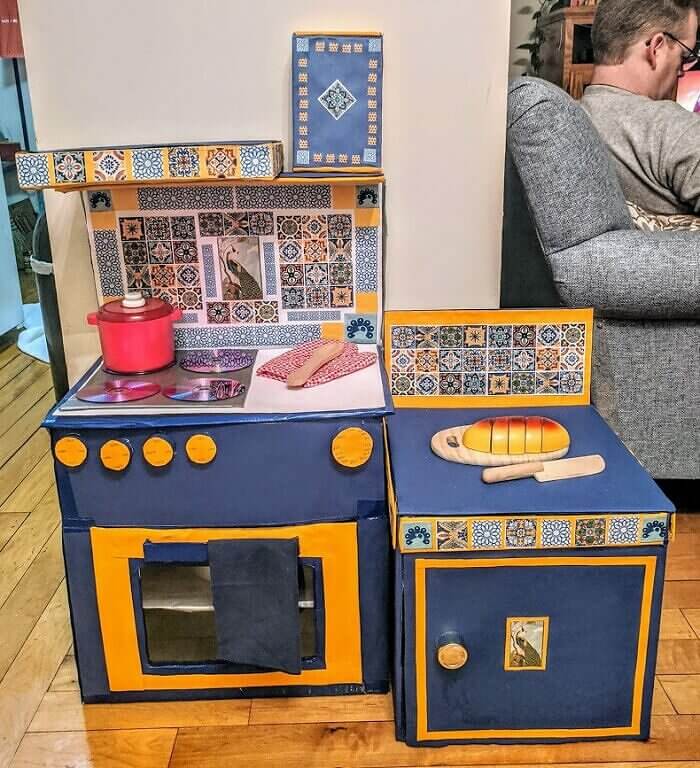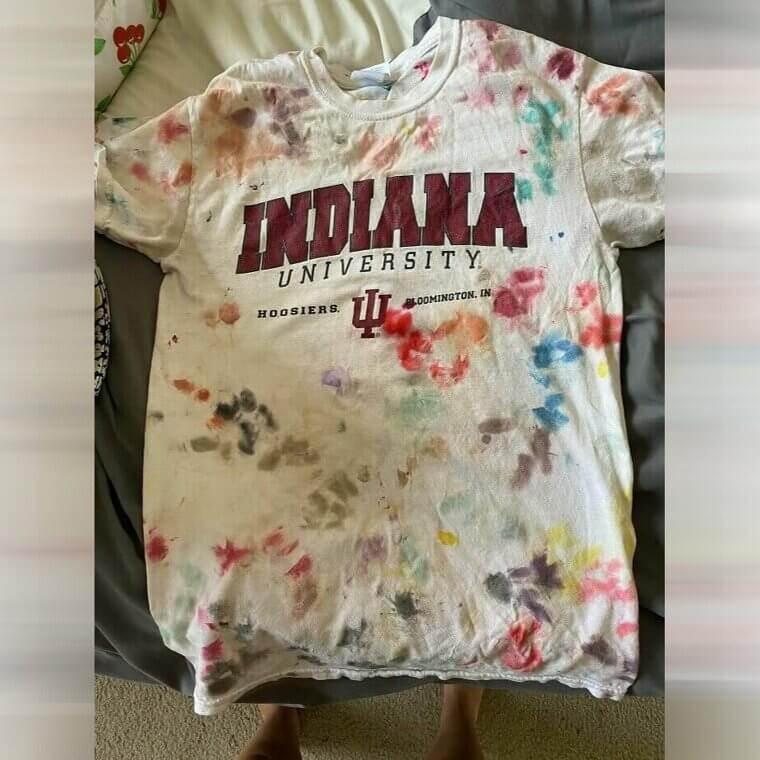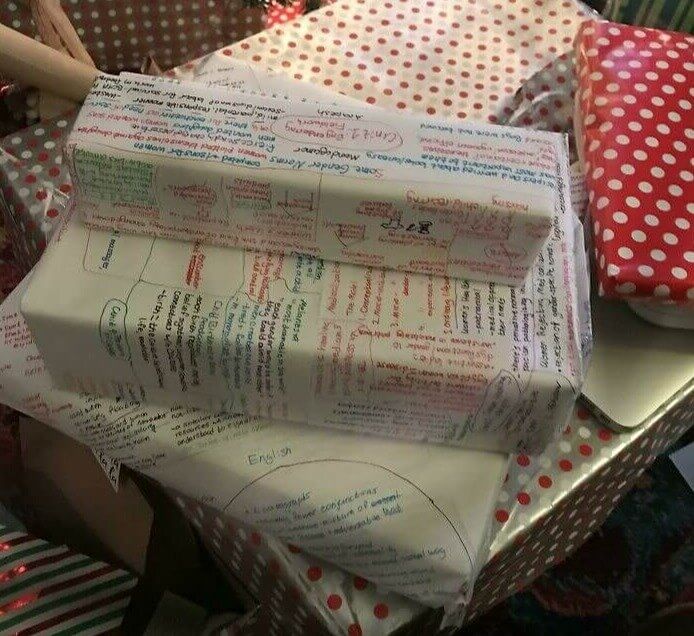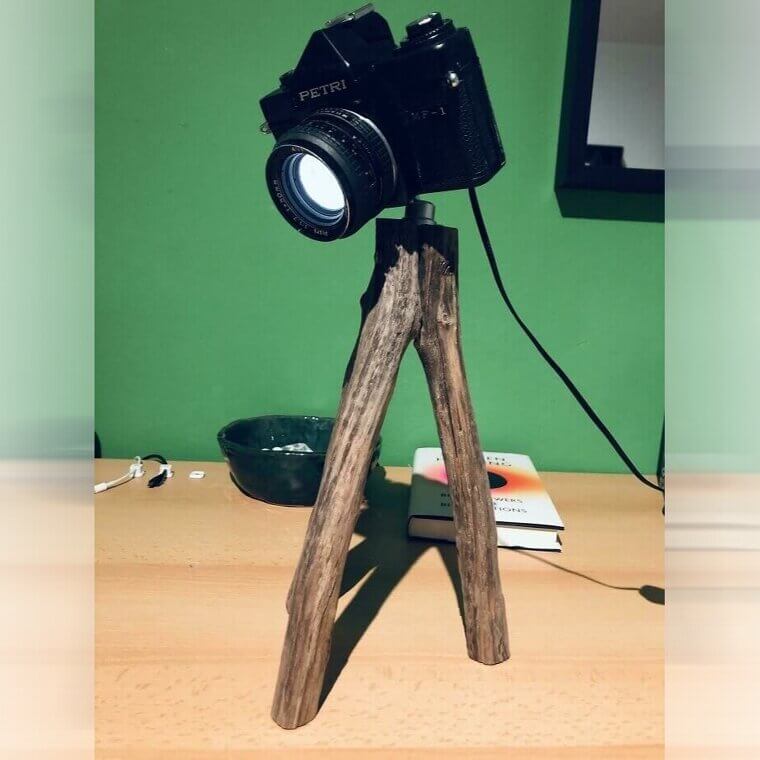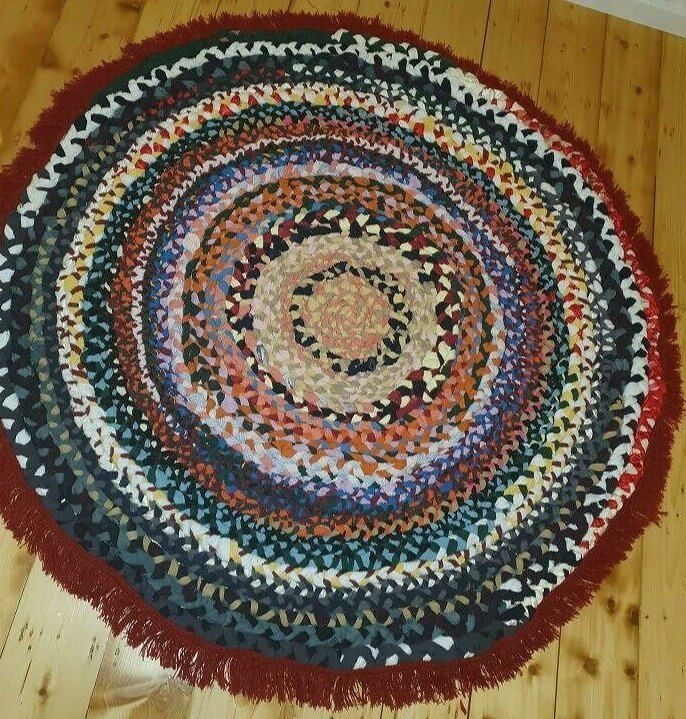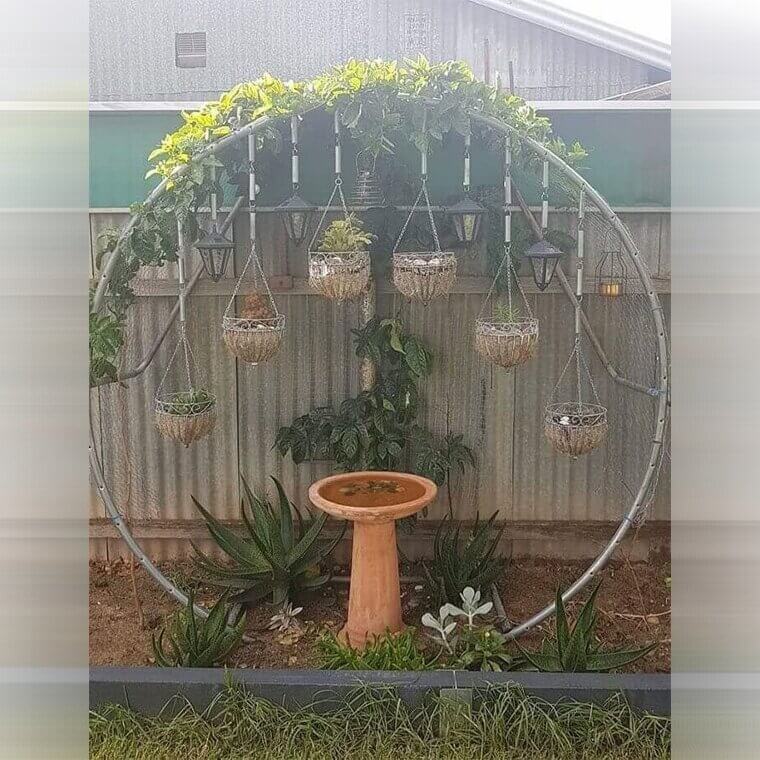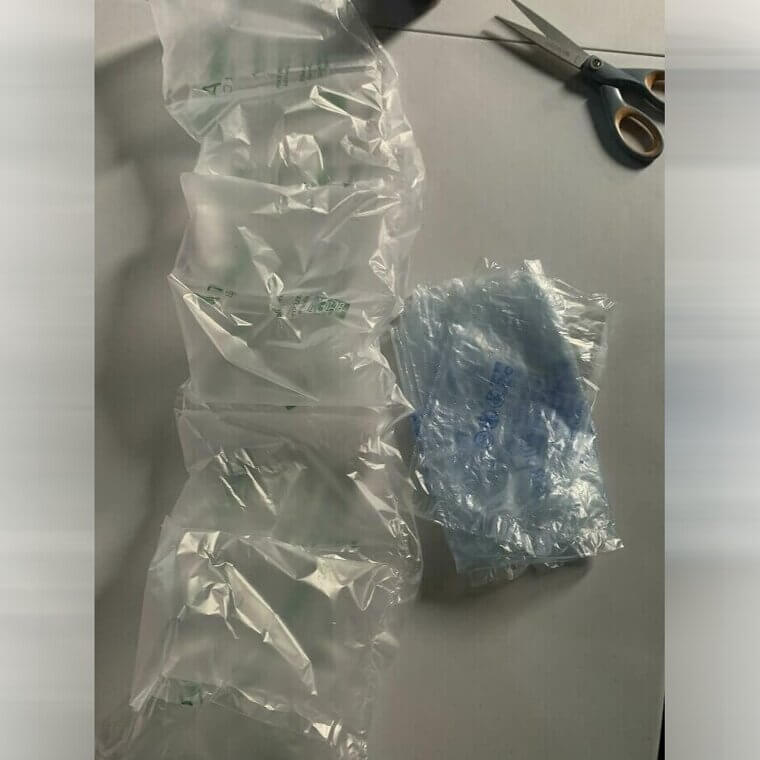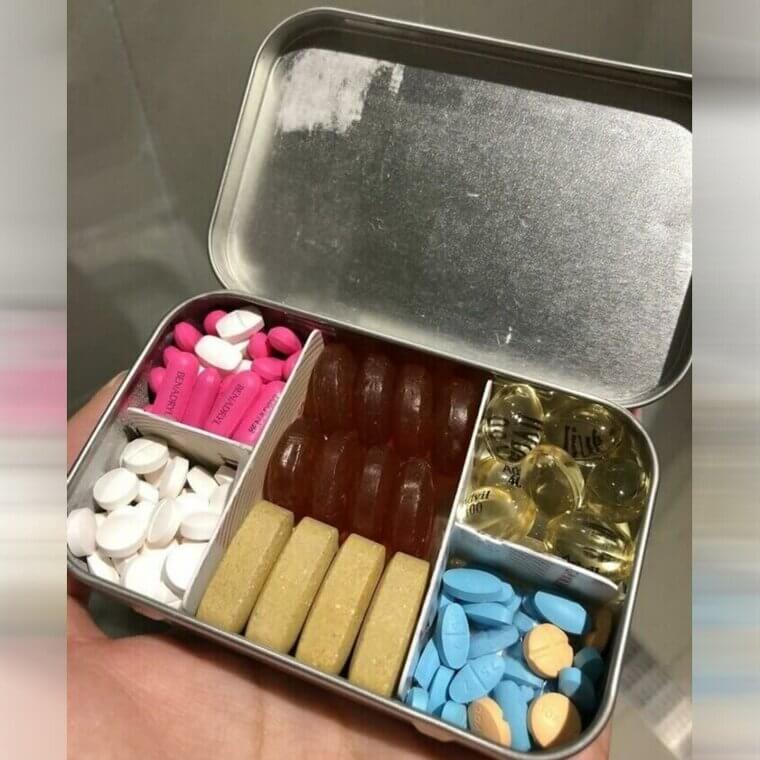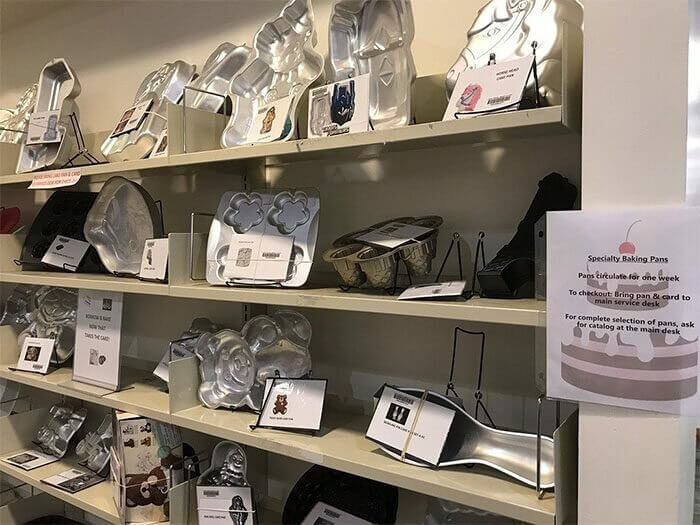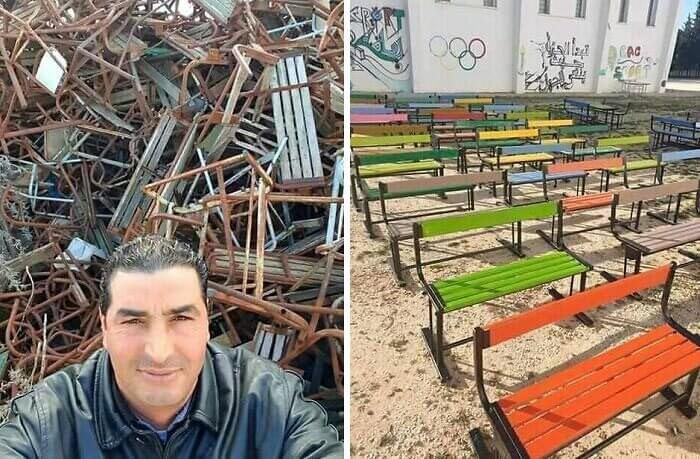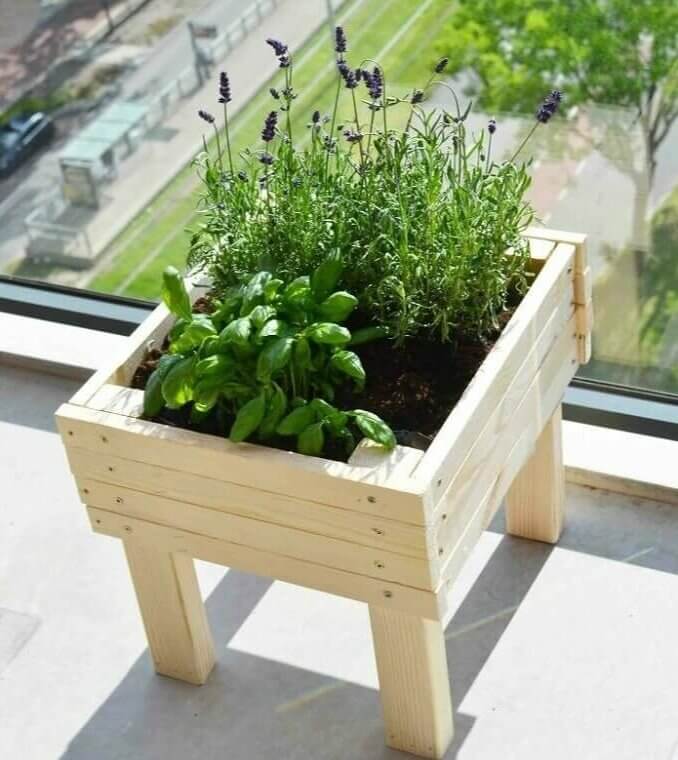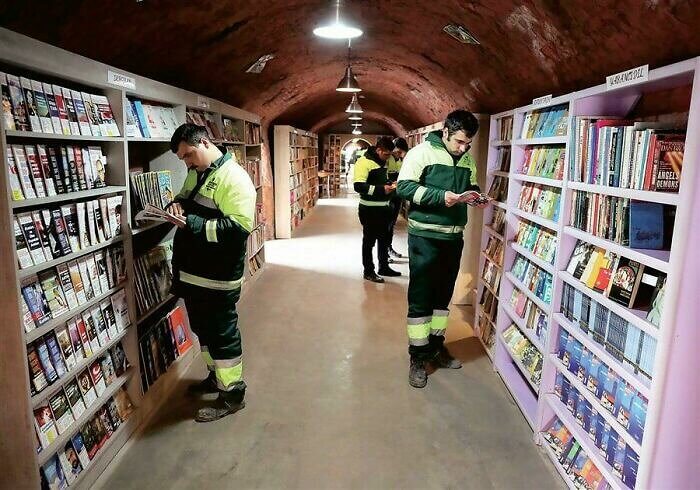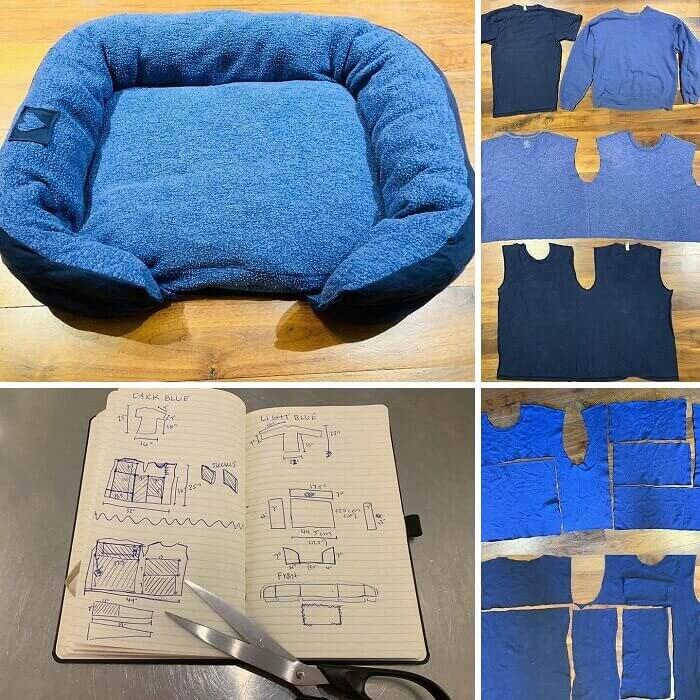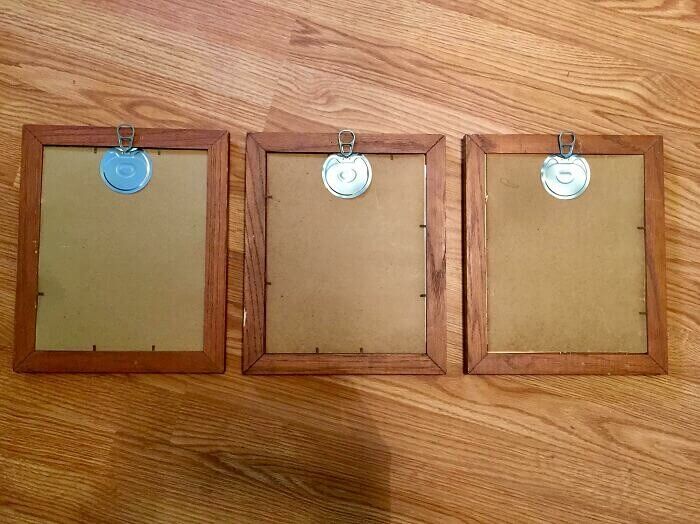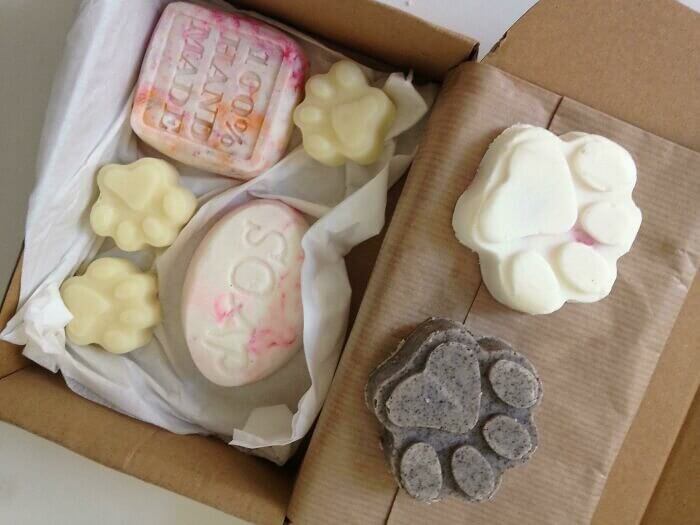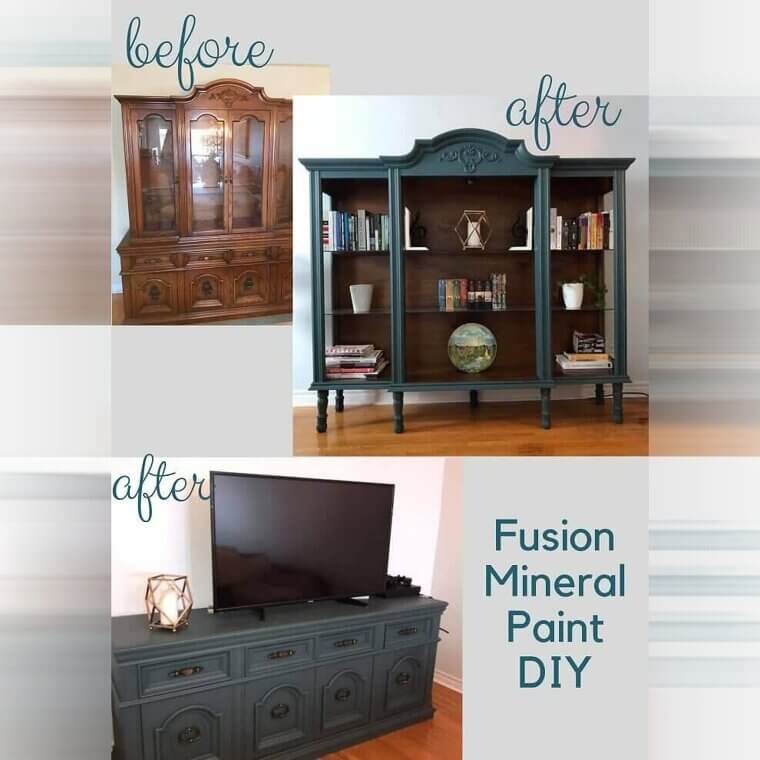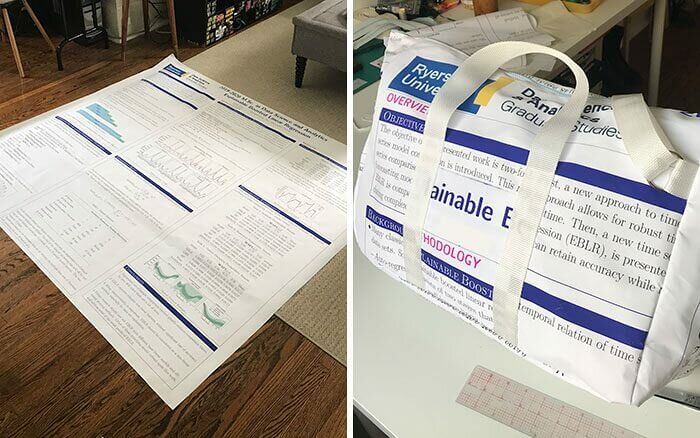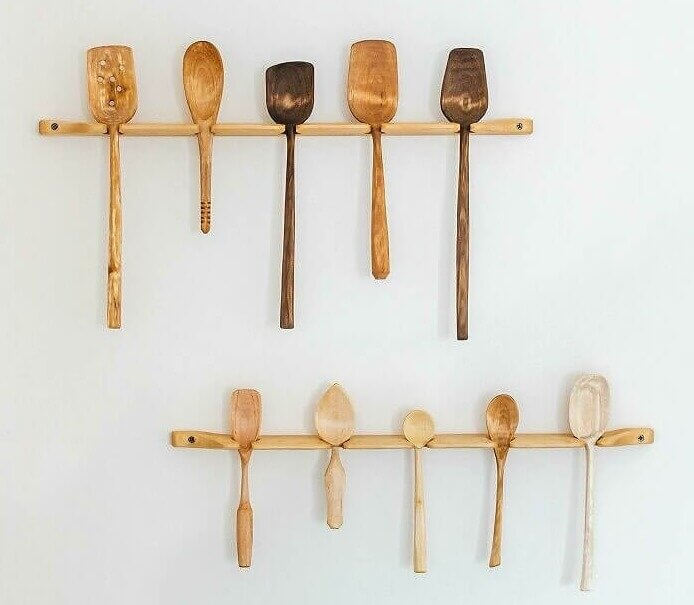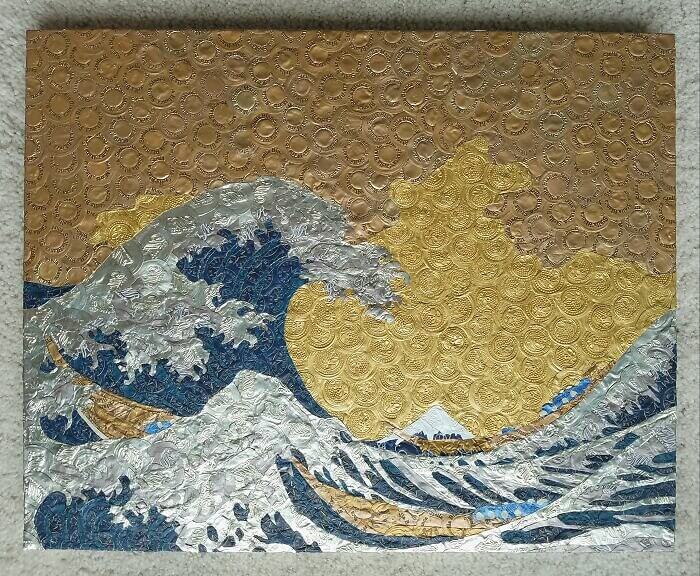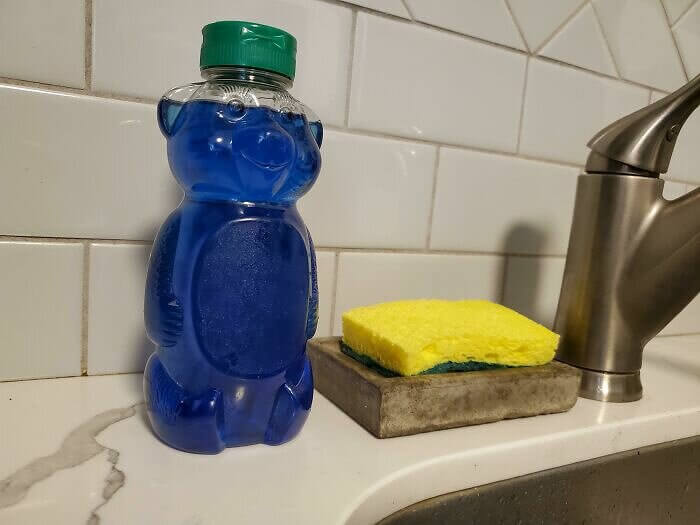Helium Balloons for Celebratory Wrapping Paper
Foil balloons are a common feature at children's birthday parties and other celebrations. However, they are extremely toxic to the environment and are among the top three pollutants threatening marine life today. Let’s be real—they will likely be used regardless, but the least we can do is repurpose them whenever possible. Fortunately, deflated foil balloons can be transformed into fun and colorful gift wrapping paper! Saving them for later is the best way to give them a second lease on life.
Next time you use them, be sure not to throw them away. Instead, stash them in your gift wrapping drawer to use at a later date. Mother nature will certainly thank you for it!
Turning an Old Branch Into a Cat Tower
Cat climbing towers aren’t cheap—they can easily cost more than a whole month’s supply of pet food. They’re also typically made with a lot of plastic, which is often unnecessary. This creative DIY turns a fallen tree branch into the perfect cat climbing apparatus, complete with a fun design and fluffy perch spots. The organic shape of this unique climbing tower is sure to be preferred by our four-legged friends.
If you're unsure how to keep it upright, try placing the discarded branch into a bucket of cement and letting it dry for a few days.
Packaging Food in Banana Leaves
It's almost impossible to avoid buying some fruits or vegetables wrapped in plastic packaging from the supermarket. However, sustainable packing methods are paving the way for the future by eliminating plastic altogether. Instead of adding to toxic environmental waste, these snap peas and okra veggies are gathered in discarded banana leaves, making for a much more sustainable option. Banana leaves decompose much faster than plastic and don't release any toxic checmicals, reducing their environmental impact and making them a smarter choice all around.
It's not just vegetables; fruits, rice, fish, and meat have all been successfully packaged in Asia using only banana leaves. If only more places around the world would adopt this practice.
Turn One Item of Clothing Into Many
If you or someone you know has a sewing machine, here's a thrifty and easy idea to consider: Before you look to throw out any item of clothing, think about whether you can repurpose the fabric into a smaller item and give it a new lease on life. For instance, the owner of this particular shell jacket decided to transform it into a matching pair of shorts, a drawstring bag, and a bucket hat. There’s no need to throw away valuable performance fabric!
If you’ve never tried a sewing project before, the drawstring bag is probably your best bet. It’s an almost foolproof textile project that has no negative impact on the environment.
Remold Old Bits of Candle Wax
We often don’t think twice about discarding old melted wax from candles. However, if we had the foresight to save those little pieces, we could create our own unique candle wax designs! Simply gather all the old wax bits, melt them, and mold them into any shape you like. Just be sure the wax isn’t too hot to the touch before shaping it with your hands. Since buying candle wicks isn’t usually very expensive, your creative candle designs are sure to save you money in the long run.
But best of all, you'll be benefiting the environment by reducing waste and minimising your carbon footprint, as you won’t even have to leave your house to keep your candle supply stocked.
Colourful Confetti From Old Leaves
It turns out we can turn to nature for fantastic stationery supplies. While confetti may seem like a harmless celebration material, it is actually very harmful to the environment. Instead of buying polluting microplastics, consider cutting shapes from a variety of leaf colors for your next celebration. They make delightful and earthy party decorations, and best of all, they are 100% biodegradable. If the leaves are dry enough, you can prepare a batch in advance and store them in an airtight container for future celebrations.
The natural colors of leaves in varying states of decomposition create a beautiful and diverse collection of confetti that's sure to impress at any celebration.
From Wool Cardigan to Warm Pet Bed
Not every knitting hack requires extensive experience. In the case of this particular old sweater, the owner decided to reuse the perfectly good wool fabric to create something new. Wool has many beneficial properties, so it would be a shame to throw it away. When the owner of this green cardigan decided she no longer wanted to use it, she transformed it into a warm and inviting pet bed instead.
Not only does it benefit the environment, but it also saves a lot of money. As all pet owners know, the prices of some pet beds can be surprisingly high.
Shelter Stray Cats in Old Water Jugs
Stray cats living on the streets are always looking for a cozy place to call home. Fortunately, there's a great DIY project that turns a previously wasteful piece of plastic into a safe space for these kitties. Water dispenser jugs, which usually last only a few days, can be repurposed to provide shelter for stray cats with just a simple cut on one side. It only takes a few seconds of your time, but it can mean the world to homeless cats.
All you need to do is cut them open, make sure the edges of the water jug aren't too sharp, shove an old blanket or towel in there, and let the strays discover them.
Grind Celery Leaves Into a Spice
Most of us throw out celery leaves even when they’re fresh, and those who don’t often do so once the leaves start to change color and become dry and old. However, grinding these old, dry leaves in a mortar and pestle is a great way to preserve their usefulness and add a new spice to your kitchen inventory. The powder retains all that delicious flavor and serves as an effective organic meat preservative, to boot.
If you don’t have a mortar and pestle, it’s not a problem. A mixer can do the job just as well and it takes half the time.
Crochet Cosmetic Pads From Old Yarn
You'd be forgiven for thinking you need to go to the shops to buy proper makeup removing pads. But the truth is, it's a waste of money and resources when you have bits of old yarn lying around. Any old textile cords in your craft box can be gathered to create awesome reusable makeup pads. Fortunately, the technique for crocheting them together is completely beginner-friendly, so anyone can give it a try and create zero-waste cosmetic pads.
Apart from the benefits of reusing fabric, these makeup remover pads are indefinitely reusable. All you need to do is toss the used pads into your laundry after use.
Single Use Chopstick Soap Holder
Most of us end up accumulating a collection of single-use wooden chopsticks without even realizing it. The truth is, they often just sit in our cutlery drawer, collecting dust and cluttering our kitchens unnecessarily. Instead of hoarding them for an occasion that never comes, consider turning them into a practical soap holder. They're especially effective because they allow water to drain properly and require almost no extra materials to create.
Just make sure you have a long enough piece of thread to wind between the chopstick pieces. Before you know it, you’ll have created a stylish wooden soap dish at no expense.
Reusing Sink Water for Toilet Flushing
This home idea is perfect for those of you looking to remodel a guest bathroom. Most guest bathrooms are tiny crawl spaces, so an eco-friendly toilet design that places the sink above the toilet is the perfect space-saving solution. It’s not just good for maximizing space; it’s also great for those seeking more sustainable home solutions. This design uses the water from the sink to flush the toilet, making it both an economically friendly and environmentally considerate choice.
While this home hack isn't a simple, quick DIY fix, it is worth keeping in mind as an option for any future bathroom remodeling projects.
Flower Embroidery to Repair a Hole
We all get holes in our clothes sooner or later, which often signals the end of a garment’s life since repairing a hole can be quite obvious. However, this creative sewing idea offers a fun and stylish way to repair holes by embroidering a small flower over them. Not only does this technique breathe new life into your old garments, but the strength of the embroidered design also ensures a long-lasting and durable repair.
If flowers aren’t really your thing, you can opt for other simple shapes like stars, leaves, or even ladybugs. The design options you can stitch are endless.
Judgemental Bin Eyes Reminds You to Recycle
This idea is designed to remind you to make environmentally friendly choices at home, especially if you find it easy to forget to separate recyclable items. It can be tempting to simply toss any used item into the kitchen bin, but sticking some giant googly eyes on top can give you and your family a playful reminder to reconsider. You don’t have to buy large googly eyes from the store—just make a pair out of paper instead.
Even if you do your part and remember to recycle your waste, there's still a good chance your household could benefit from a friendly and fun reminder.
Using Those Broken Gingerbread Men Pieces
It's easy to be wasteful when baking gingerbread men, as they can easily snap during the preparation process. Many amateur bakers might simply discard these broken bits, but there's a fun and creative way to repurpose them instead. Rather than throwing away the broken pieces, consider turning them into an alternative biscuit design by embracing the idea that the gingerbread men have broken limbs. All you need to do is use the fragments to create amusing broken limb shapes.
This approach not only reduces unnecessary food waste but also adds a humorous element to your baking. They’re sure to bring a smile to anyone’s face.
Hiding Stains With Tie-Dye
Once we get a stain on an item of clothing that won’t come out, it often means the garment is nearing the end of its life. However, this tie-dye idea is an ingenious way to keep that item looking good, as the stain becomes nearly invisible. You can either buy tie-dye kits and use elastic bands to create designs or simply reach for household bleach to achieve a two-tone color effect.
For an even more eco-friendly project, you can use beetroot or red onion for a natural reddish dye, and add a splash of vinegar to enhance the color vibrancy.
Cardboard Play Kitchen for Kids
Kids love having their very own play kitchen, but let's be honest, they’re often terribly expensive and wasteful. Usually made almost exclusively of plastic, these toys can take up to 500 years to decompose on our planet. Instead of buying a pricey children's toy, why not make your own using recyclable items you have around the house? It can turn into a fun parent-child afternoon activity, and your kids will likely learn a thing or two as well.
In this DIY play kitchen, the parents used old cardboard boxes for most of the structure and created a mosaic tile backsplash using patterned paper.
Using Nail Polish for Clothing Designs
If you're bored with typical tie-dye methods and looking for a new way to hide stubborn stains on clothes, why not delve into your nail polish collection? This can be a great way to use up old or expired nail polishes that you would otherwise discard, making it an eco-friendly solution for giving new life to your garments. The splashes of color won’t wash away, so you can be sure the item will maintain its vibrancy.
Best of all, if you accidentally 'color outside the lines,' you can simply dab some nail polish remover over your mistakes to clean them up.
Wrapping Gifts With Unneeded Study Notes
All those study notes usually just sit in storage until enough time has passed for us to throw them away. But why not put them to use by wrapping presents with them instead? It’s a bit nerdy, but it’s also a unique way to give a gift and helps reduce your carbon footprint in the process. Plus, there's the added benefit of possibly inspiring the recipient to do the same!
If your study notes aren't as colorful as these, you can always highlight a few sentences here and there to bring the wrapping paper to life.
Alternative Table Lamp From Repurposed Materials
This creative eco-friendly hack has come up with an ingenious way to repurpose old cameras. What might look like a camera using a tree branch as a tripod is actually a clever desk lamp! While this isn't a super quick zero-waste project, it’s completely worth the effort. Head to your local hardware store to pick up the necessary lamp base, install it inside the camera body, and add some wooden legs. Before you know it, you'll have a unique lamp in no time.
What we like most about this hack is that it can be applied to other items as well. If you don’t have an old camera lying around, why not use an old glass bottle instead?
Braiding a Rug Out of Unused Fabric
If you have enough pieces of old yarn and fabric lying around, you can combine the different colors to create your very own zero-waste rug. It’s not a complicated pattern to recreate, and if you don’t have enough materials at home to make a rug large enough, you can always ask family and friends if they have any unused textile materials. You don’t need any tools besides the fabric and your hands—essentially, you just need to braid the pieces together.
Even if you don't have individual strips of fabric, you can cut up old clothing to create evenly sized strips. It’s an eco-friendly home hack that everyone should try.
Turning an Old Trampoline Into an Arch
Almost anything around the home can be repurposed if you're willing to think outside the box. When this household's trampoline broke, they found an inventive way to reuse parts of the frame by transforming the metal structure into a beautiful outdoor archway. Instead of throwing it away, they created a charming arch from which to hang plants, outdoor lights, and candlesticks. To complete the look, they added a bird bath to the centre of the structure.
An old trampoline frame is ideal for hanging objects and ornaments as it features several pre-existing openings throughout the structure. Just hook them on and go!
New Uses for Packaging Air Bags
Often when we buy something online, it's packaged in plastic that's meant to protect the item during shipping. While this packaging is useful for transporting products from point A to point B, it's usually thrown away once it arrives at its destination. Instead of chucking out this perfectly good plastic, consider deflating and repurposing it for other uses. For example, these plastic bags can make excellent pouches for collecting pet litter.
If you don't have a pet, these bags also make excellent freezer bags. Additionally, if you have the space, you can store them as they are to use for shipments at a later date.
Candy Tins Are Ideal Pill Boxes
Whether you have a collection of medicines that you need to keep organized or an elderly relative who takes a lot of pills, consider repurposing an old candy tin into a charming pill box instead of throwing it away. You can cut small pieces of cardboard to fit inside the tin to create dividers for the pills and add some extra decoration to the outside using old nail polish.
It's also worth noting that many old-fashioned candy tins feature adorable retro designs on the outside, which can make the pill box even more charming and appealing.
Rent Cake Tins Instead of Buying Them
Did you know that you don't always have to buy a new pan or cake tin for every recipe you want to try? You can often rent them instead for a lower price than purchasing them brand new. Many people buy pans or cake tins for a one-off recipe and never use them again. This practice is not only wasteful but also unnecessary when rental services for cake pans are available. Sometimes, local caterers also offer this service.
There are even some public libraries that have started offering pan rentals, though these services are still relatively uncommon. It’s worth checking with your community library to see if they offer this option.
School Benches Can Be Easily Refurbished
This guy knew he could put his skills to good use when he came across a huge collection of discarded school benches. While we understand why they were thrown out, thanks to this handyman, their life was extended. He stripped the benches, sanded them down, primed, and painted them, turning them into a fresher looking version of what they were before. If you ask us, they look far more appealing now than they did.
It just goes to show that not everything needs to be discarded when it starts to look a little tired—sometimes, all it takes is a bit of TLC.
Wooden Crates Become a Planter Box
It's not hard to find an unused wooden crate lying around, often discarded and waiting to be sent to the landfill. Instead of letting that good wood go to waste, why not transform it into a simple planter box? It won't cost you anything in new materials, and you'll only need the most basic building tools and equipment. The design is super simple—just reshape the crate into a rectangular form.
The wood can be used to make other household items, but turning it into a flower bed or planter box contributes to more greenery and ultimately, a healthier planet.
Library of Discarded Books
A group of refuse collectors in Turkey noticed the vast number of books being discarded with household trash. Instead of throwing them away, they decided to create an underground library filled with all the unwanted books in their spare time. The result is this charming subterranean reading room that organizes the books into different categories. Not only does it significantly reduce waste, but it also helps lower the overall carbon footprint.
If you find yourself wanting to get rid of books, donating them to a charity shop or book collection initiative is definitely a great option.
Old Clothes Become a Patchwork Quilt
Collecting old pieces of fabric or unwanted items of clothing can lead to the creation of something as beautiful as this patchwork blanket. Instead of discarding these old textile materials, you can transform them into a stunning and functional soft furnishing or, if you're particularly skilled, even a unique piece of artwork! We love that you can choose to create any image or pattern you heart desires, and it's 100% zero waste and ecologically sustainable.
With this eco-friendly DIY, you'll be combining a variety of random fabric materials and end up creating something that's entirely original and one of a kind.
Making Pet Beds Out of Sweaters
This fantastic eco-hack demonstrates how you can transform an old T-shirt and sweater into a plush and comfortable dog bed. As illustrated in the image, by cutting the old garments into various shapes and stitching them back together, you can create a pet bed that rivals even the store-bought alternatives. To complete the project, you can either use sustainable padding for extra cushioning or repurpose additional old fabric materials you have lying around to stuff the bed. This approach not only repurposes old textiles but also provides a brand new sleeping spot for your furry friend.
Considering how expensive dog beds can be, especially for larger breeds, this creative approach provides a thrifty and sustainable solution for our beloved four-legged friends.
Tin Lids Can Hang Picture Frames
This eco-friendly hack requires minimal DIY effort. Simply save up old tin lids, give them a thorough clean in the sink, and attach them to the back of your picture frames. This method allows you to make your frames ready for hanging without needing a hammer or any complex tools. It’s a truly minimalist project that can be completed in just a few minutes, making it both easy and effective.
Just make sure that you're careful when removing, washing, and attaching the tin lid to a picture frame, as the edges can be surprisingly sharp.
Freeze Shower Gel Into Hand Soap
Old shampoo, conditioner and shower gel bottles usually have a few last drops of product that are impossible to reach by normal means. But if you cut the bottles open and retrieve the remaining product, you can create these adorable little soaps that are perfect for the guest bathroom. Simply empty the bottles into some ice cube trays and pop them in the fridge for a few hours. Before you know it, you'll have a whole tray of bespoke soaps at your disposal.
Don't forget to try running a toothpick through the shampoo, conditioner, and shower gel solutions before freezing them in their molds to create some fun swirls of colour!
Creating a Matching Set of Furniture Items
Whether our furniture is outdated, broken, or we're simply tired of looking at it, there are some great DIY projects that can transform an old piece of furniture into two new and fresh home fixtures. In the case of this large wooden cabinet, it was halved horizontally to create two separate pieces: a glass cabinet and a chest of drawers. Fortunately, the chest of drawers also makes for a perfect TV unit too.
After removing one part of the cabinet from the other, they sanded down the surfaces and repainted it a deep blue shade to give it a more contemporary feel.
Your Personal Portable Cutlery Pouch
Most of us have an old pencil case lying around the house, but you can turn it into something super practical and eco-friendly in a matter of seconds. Grab the case and a few items of cutlery to keep in your bag wherever you go. Next time you're out getting food and they ask if you need cutlery, you'll have everything you need. Chances are, it'll spare more than a few pieces of plastic cutlery.
It's only one extra item to carry around in your bag, and it's not very heavy. But most importantly, it'll do the planet a lot of good.
Discarded Work Materials for DIY Projects
This hack is perfect for those of you who work in an office that produces fabric posters. Many workplaces have high-quality fabric posters made for various events, but they only have a short lifespan before they're thrown out with the garbage. When old posters are discarded or replaced with new ones, try collecting the old poster materials and turning them into a unique tote bag instead! It's simple to make, as it mainly consists of two slabs of rectangular fabric.
It's definitely better than letting the unneeded posters waste away in a landfill when all they need is a little creativity to transform them into something new and practical.
Woodworking for Simple Kitchen Utensils
Wooden utensils are definitely preferable for cooking in the kitchen. They are a more eco-friendly option compared to other materials available in stores such as silicone, as they are 100% compostable and don't require harmful chemicals. Instead of buying kitchen spoons, why not consider crafting your very own set? Since wooden spoons have a relatively simple shape, they can be an excellent beginner project if you're new to working with wood.
We especially love the variety of colors and textures in the wooden spoons shown in the image. They’re sure to add an artistic touch to any kitchen.
Making Art Out of Wine Bottle Caps
We’ve heard of beer bottle caps being used for art, but this is the first time we’ve come across wine bottle caps being repurposed to create a home decor item. The artist behind this work used aluminum wine caps to recreate a famous Japanese woodblock print and it totally works. By utilizing the various colors of different aluminum lids, they managed to craft an enchanting metallic piece of wall art that’s truly inspiring.
If there’s a household item that you purchase on a regular basis, consider saving parts of it for a future art project for a rainy day.
Single Use Plastic Used for Decoration
Tons of the single-use plastic items that we buy from supermarkets can be repurposed around the house. Take, for instance, this old honey bottle, which makes for the perfect container for washing up liquid to keep by the sink. Not only is it a smaller and more compact portion, but the cute bear design makes it a lot more fun than the usual bottles. It demonstrates how used plastic packaging can easily be given a new lease on life.
Whenever possible, it’s always best to repurpose an item before sending it to a recycling plant, as it will lower the carbon footprint even more.

